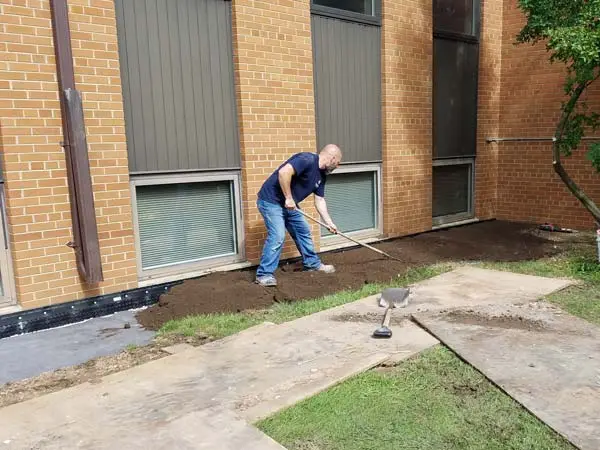The waterproofing stage is one of the prominent parts of a building construction phase, as it is an essential aspect in maintaining the durability and longevity of a site in the long run. The application of waterproofing is not only to resist water-related damages to the building but also to prevent it from damaging the interior atmosphere of the house by preventing mold and fungus growth. Even though waterproofing is essential at both interior and exterior levels, let’s discuss its advantages and disadvantages.
Exterior waterproofing refers to treating the house’s outer regions that might be a path towards water-related damages. The barrier is constructed by mixing the elements of waterproofing materials with the cement or foundation; it acts as a first line of defence for the home wall, protecting it against the moisture and mildew caused by the atmosphere. We start building this by digging around the foundation, connecting a French drain to it, and finally coating it with strong waterproofing materials and cement to the membranes.
A significant advantage of exterior waterproofing is that it deals with the problem right at its origin point by resisting the flow of water entering the structure first; this prevents the growth of fungus and softening of the walls. It’s a very effective waterproofing method, especially in heavy monsoon-prone areas such as the coastal city of Mumbai. A resident must always trust only the best experts who are well-versed in waterproofing Mumbai localities.
The process of waterproofing an exterior can be costly and time-consuming. Excavating around the foundation is necessary, which might cause disruptions, particularly for buildings that have already been constructed, such as offices or homes. Furthermore, it might only occasionally be practical for structures with multiple stories or areas with restricted external access. Even with these difficulties, exterior waterproofing is still one of the best ways to prevent water damage over the long run.
Conversely, interior waterproofing concentrates on controlling water already entering the structure. This technique is frequently applied in lower levels or basements where water collects. Installing sump pumps, inside drainage systems, and waterproof coatings on interior walls and floors are examples of interior waterproofing options. These techniques aim to divert water from the structure and stop additional damage. One of its main benefits is that inside waterproofing is comparatively less expensive than outside techniques. The procedure is quicker and less disruptive because no substantial excavating is involved. For households looking for a less costly solution to their water problem, it’s a great option. In buildings where exterior access may be challenging, interior waterproofing is also more straightforward to install.
Interior waterproofing, however, is a more reactive approach. Although it can efficiently control the amount of water within the structure, it does not prevent water from entering in the first place. Constant water infiltration over time can still erode the structure and increase the chance of mold growth. This technique works well in locations with minimal water issues or as a backup to outside waterproofing. The building’s construction, the extent of the water issue, and financial limitations all play a role in the decision between external and internal waterproofing.
External waterproofing is preferable if your property is close to water or in an area with a lot of rainfall. By preventing water from entering the building, it offers a durable solution that shields the walls and foundation from harm. Internal waterproofing might be a more sensible option for places that occasionally have water problems. It may be used without affecting the building’s appearance and is less intrusive.
Consulting with the best waterproofing contractors in Kochi can help you find customized interior solutions that cater to the unique requirements of homes in coastal areas like this one, where humidity and sporadic rains are expected.
Although each technique has advantages, many professionals advise combining internal and external waterproofing for complete protection. Water intrusion is prevented via outside waterproofing, and interior solutions manage any moisture that does enter the building. The best of all worlds is provided by this dual strategy, especially in areas that are vulnerable to flooding or high rains. There is no one-size-fits-all approach to waterproofing. The location of your building, its construction, and the extent of the water issue will all influence your decision between exterior and interior waterproofing. Exterior waterproofing offers robust and long-lasting protection by preventing water from reaching its source. Interior waterproofing is more appropriate for minor water problems and concentrates on controlling water once it enters the building.
The best course of action can ultimately be determined by carefully evaluating the demands of your property and speaking with waterproofing experts. Working with the top waterproofing contractors in Kochi can guarantee that your structure is adequately protected against the particular difficulties presented by the coastal environment in areas like Kochi, where external and internal elements can contribute to water penetration.
